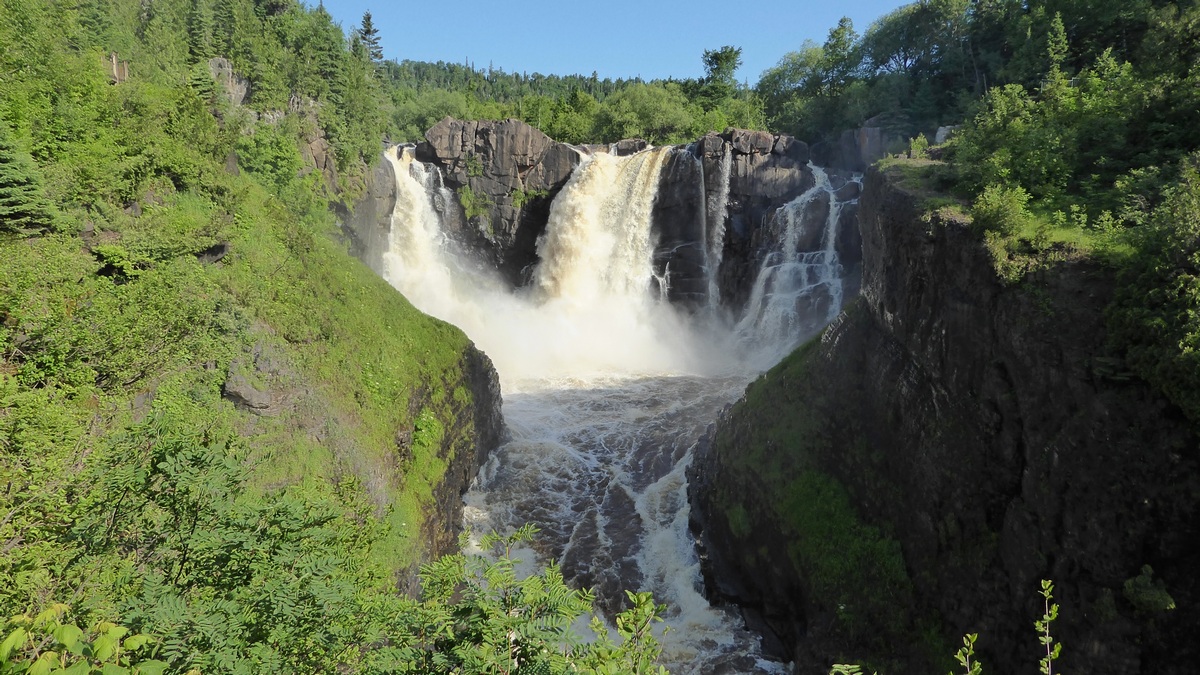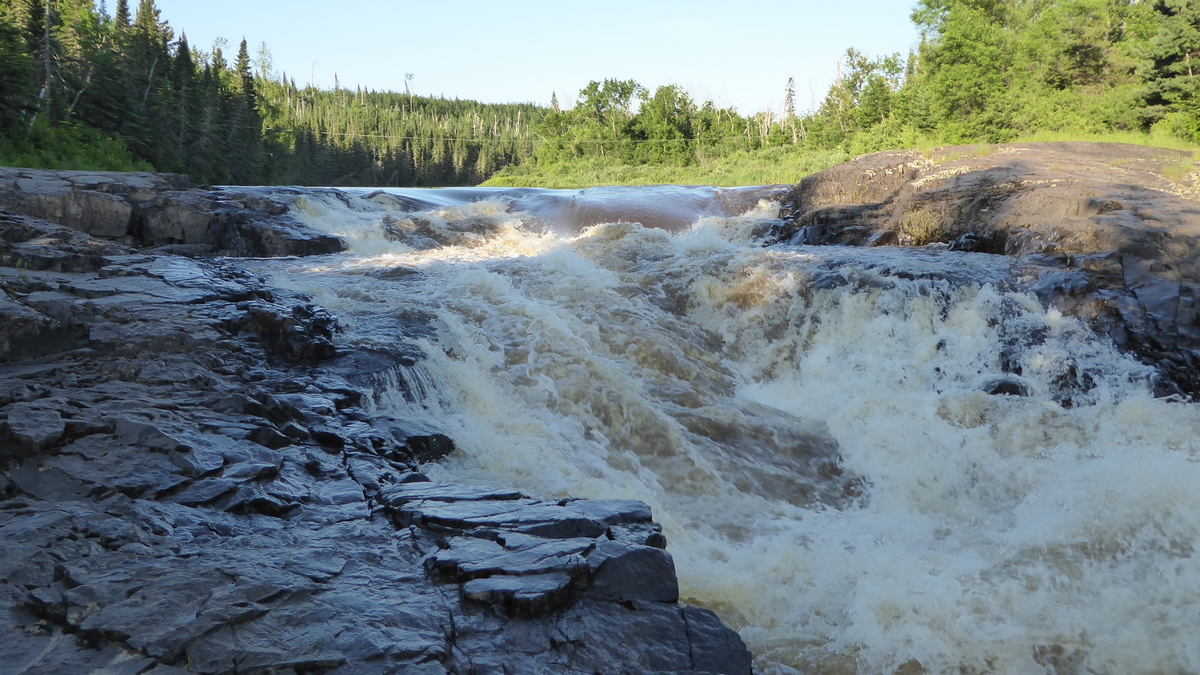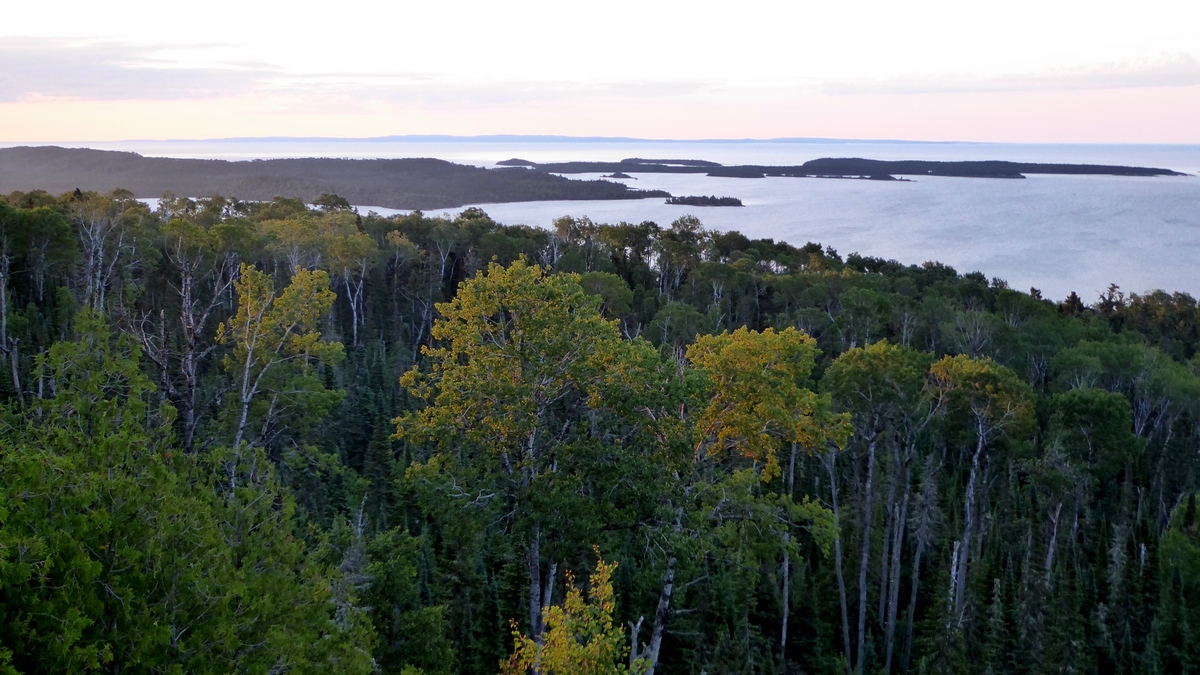From Outrage to Justice
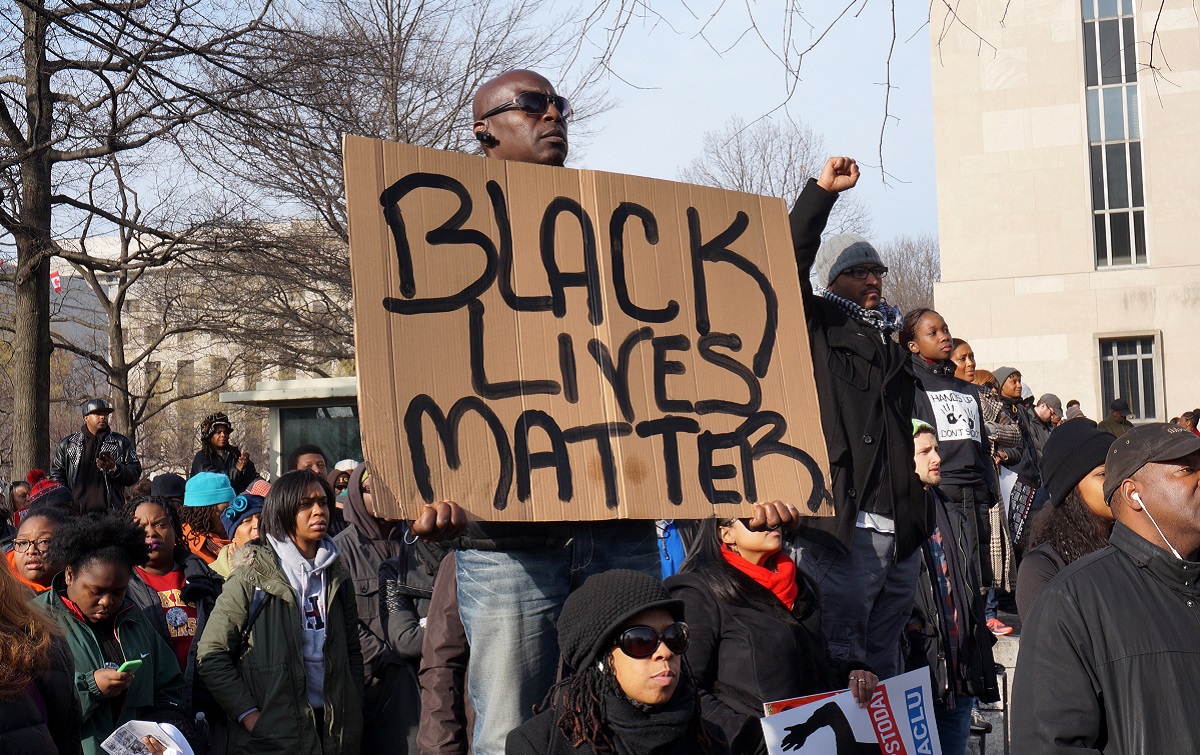
Photo by iStockphoto.com/Coast-to-Coast
By now, you’ve likely seen the video of Christian Cooper, a Black birder, being unjustly harassed by a white woman who was illegally walking her dog off leash in Central Park. Amy Cooper’s call to the police could have resulted in yet another death of an unarmed Black person at the hands of an officer -- just like George Floyd, Breonna Taylor, and so many others before them.
What happened to Christian Cooper is part of a long, ugly history of racial exclusion in our parks and public spaces. Like water fountains and lunch counters, many national parks were once segregated. Black people have been killed for drifting into waters that were supposed to be for whites only. Just a few months ago, a Black person, Ahmaud Arbery, was killed for running in a neighborhood that his murderers seemed to believe was for whites only.
Racist incidents like these go a long way toward explaining why Black people feel excluded from our country’s wild places and national parks. But Black people and other people of color deserve to be safe in our parks and public lands. They deserve to be safe while going for a run. They deserve to be safe sitting in their own vehicles, as George Floyd was before he was pinned to the ground and murdered by police. They deserve to be safe relaxing in their own homes, as Breonna Taylor was doing when officers fired more than 20 rounds into her kitchen and living room. They deserve to be safe, period.
We should be outraged -- and I know that millions of us are indeed outraged -- by the racist violence inflicted upon Christian Cooper, Arbery, Floyd, Taylor, and so many others. But as Sierra Club members and supporters, we need to go beyond outrage to working for justice. As an organization, we’re committed to making the outdoors a safe place for everyone. So many of us have found peace, joy, and community in the woods, on the water, on the mountains, and in the desert -- and we know that everyone deserves to have the outdoors as a refuge, especially in these challenging times.
To make that vision a reality, we need people like you -- people who have joined our outings, who volunteer their time and money to protect their local wilderness -- to become anti-racist allies. You are the person best positioned to make sure that your local trails and birding spots are safe places for people of color. Just like we need to work hard to fight climate change and protect nature, we need to be active in dismantling the racism that is tearing our country apart. Indeed, we cannot separate these issues. The companies that have profited from fossil fuels and accelerated the climate crisis are the same ones who have benefited from environmental injustice, colonialism, and racism.
What does it look like to practice anti-racism in the outdoors? I’m not going to pretend to have all the answers. But if you’re white and you get outdoors with people of color, listen when they talk about what they need to feel safe, and work to make it happen. Don’t dismiss people’s stories of experiencing aggression or fear in the outdoors, even if they don’t match your reality. Ask your local park administrator what they’re doing to protect people of color. If you or your friends encounter an Amy Cooper on the trail, step in to de-escalate the situation and reduce harm. What bystanders do matters.
And we need folks of all identities to get involved with existing efforts to make the outdoors safe for everyone, because everyone can benefit from time spent in nature. Learn about the Sierra Club’s Outdoors for All campaign and how you can get involved. Support our partners in this space, like Latino Outdoors, GirlTrek, and Outdoor Afro (full disclosure, I serve on their board).
None of us will end racism through our individual actions. Systemic evils demand systemic changes. But together, we can work to make the outdoors a safe haven for everyone who needs one. As Christian Cooper told The New York Times, “We should be out here. The birds belong to all of us.”
And our anti-racist practice must not end when we leave the park, or get into our cars and drive away from the trail. As so many have noted, Amy Coopers are in our workplaces. They’re in our schools. They’re in our churches and temples. The racist fears that drove her to call the cops on Christian Cooper are the same ones that motivate officers to use deadly force.
We must hold ourselves responsible for calling out injustice wherever we see it, and working for change. Because, to paraphrase Christian Cooper, this world belongs to all of us.
Michael Brune is the executive director of the Sierra Club, the largest grassroots environmental organization in the United States. You can email him at michael.brune@sierraclub.org and follow him on Twitter (@bruneski) and Facebook.
Comments from the Chair
Legal assistance for protestors
Attorney Steven Gilmore is offering pro bono legal assistance for protestors. He can be reached at (210) 419-8218, a dedicated phone line. All calls will go to voicemail. When calling, he is asking for people to leave a name, callback number and DOB/SID.
He also has a dedicated email address for all inquiries: probono@sacdla.com
In-person meetings still suspended
Our in-person meetings remain cancelled due to the COVID-19 pandemic. So this month, our general meeting will be an online Zoom videoconference. Details are below. Please check the Eco Centro webpage, Alamo Group meetings calendar, and your email, for notification when in-person meetings are to resume.
Quicker action would have saved thousands
The USA passed the 100k dead mark a day or two after Memorial Day. Studies suggest that social distancing measures, if instituted two weeks earlier, would have saved over 80% of these (and future) lives (i.e. over 80,000 Americans would still be alive today instead of dead of this disease).
Science matters. Politics matter.
COVID-19 whacks agency budgets
Most local agencies are facing huge budgetary shortfalls due to the COVID-19 economic downturn. The city budget for this year is millions of dollars short, as are the budget for VIA and our Edwards Aquifer Protection Program (EAPP).
Most local revenues come from sales tax or property tax. Sales tax revenues are down by hundreds of millions of dollars.
State wide education funds are down substantially due to huge drops in oil & gas tax revenues. CoSA is beginning FY2021 Budget discussions now.
At a time when local needs are urgent and huge, Republicans in Washington refuse to help local governments. The prospect exists of furloughed police and firefighters and many other city employees, only worsening economic malaise.
Landlords will begin many evictions in June, since CoSA could not agree to extend protections for distressed renters. Transit expansion plans for VIA, a vital service for the poor and disabled, may be delayed for years.
Public utilities must change to protect ratepayers
Both CPS and SAWS have suspended disconnections but are still counting on eventual bill collection from many thousands of distressed area families who, even if they are able to return to work, will mostly be earning low wages with minimal or no benefits (our enlightened business leaders are still suing the city against its paid sick leave ordinance). these families will probably struggle for many years to pay off these debts.
Our utilities need fundamental change. Their current Board structures do not protect ratepayers from huge financial mistakes, such as failed (fortunately) nuclear power plant efforts, successful (but unwise and soon to be stranded asset) Spruce 2 coal plant, and successful (but unneeded and too costly) Vista Ridge water pipeline.
It may be time to ditch these Boards and put the utilities (back) under full and direct City Council control and authority, as works well in Austin. In the case of SAWS, this would facilitate “one water” regional planning, as the city already operates storm water management, and the EAPP. One water management recognizes the water cycle and uses the full range of this cycle to provide for our regional needs, whereas SAWS is in business to sell water.
Regional water plan a fantasy
The draft Region L 2021 water plan is another expensive but misguided exercise in science fiction. There is science here, but the predictions are largely fiction.
This Plan looks out to 2070 to predict our water supplies and needs, and options for meeting those needs. The plan is based on 2010 census data. Extrapolations forward are essentially linear, the past taking us inexorably to the future.
The same sincere extrapolations made in 1960s Detroit assured the Business Leaders that in 50 years Detroit would be a huge city of several million people, not the shrinking city of half million it is today. The Plan, most egregiously, does not give any mention to climate change whatsoever (see section 1.2.1 Climate1). 2070 predictions can be useful, but here they are just fantasy.
Our future
The Trump Administration, Republican Party, Abbott administration, and many other parts of our society are doing all they can to “reopen” our economy, get people back to work, and get everything back to the way it was pre-COVID-19 pandemic.
As Mr. Trump tweets: “This is so unfair! Everything was going so great.” For many of us…not really!
Returning to a high consumption, high energy use, high traffic, low wage, minimal safety net economy that results in high pollution, high stress, high violence, high illness, and destroys the climate future for our planet and our families—this is not the future for us!!
We have learned we can do a lot of things from home. We can get along without some of the things we thought were important pre-COVID-19, including driving all over. We do need family and friends, safe shelter, food, clean air and water. Instead of going back, we can join many other cities in permanently closing many streets to traffic, enhancing bicycle and pedestrian safe mobility. We can clean our air and reduce carbon emissions.
We can answer the climate challenge. We need a Green New Deal to bring our economy forward with:
- good paying jobs for all who need them,
- with a replacement to our outdated and unfair tax structures,
- with criminal justice reform and environmental and social justice,
- with an end to fossil fuel combustion,
- with elimination of non-degradable plastics,
- with an end to primacy of private vehicle ownership and other forms of grossly excessive consumption, and
- with a reimagined ReImagine VIA that may rely heavily on an autonomous vehicle fleet connecting neighborhoods, and buses safely reconfigured for only longer haul trips.
We can have safety nets that protect everyone from health emergencies, from homelessness and joblessness, from criminal injustice by authorities in power. We can show love and respect to our neighbors and fellow citizens, and live together without the gross social, racial, gender, income, geographic and other inequities that distort our society and threaten our national future.
Final thoughts on where we are: The Age of Radical Evil.
by Terry Burns, M.D., Alamo Group ChairTackling Climate Change: Addressing Methane Pollution and Natural Gas Flaring in Texas’ Permian Basin
Because of the Coronavirus, our June general meeting is online via Zoom, a free software best used through a computer. Just RSVP, and we’ll email you a link to access the webinar.
Instructions are provided below. Please RSVP early to assure your space on the webinar.
Producing natural gas is producing enormous problems for Texas. The huge amount of water required for gas extraction, frequent and damaging wastewater spills, earthquakes linked to disposal, family farms and ranches seized for pipelines, and the air pollution, fires and explosions at petrochemical plants, all add up to significant damage to our air, water and land.
Join Emma Pabst, with Environment Texas, on a journey to and from Texas’ Permian Basin, where oil and natural gas are pumped out of the ground, into the air, and shipped through vast networks of pipelines that fuel homes, businesses, and dangerous petrochemical facilities across the state.
Tuesday, June 16th
Tech support 6:00 to 6:15 pm, announcements 6:15 to 6:30, program 6:30 to 8:00
Online at Zoom
We’ll take a deep dive into natural gas; where it comes from, why it’s dangerous, and what we can do about it. Afterwards, we’ll write letters to our legislators -- with oil prices at historic lows, now is a better time than ever to make our voices heard. Join us in urging Texas’ leaders to step up and regulate an industry that’s reigned Texas politics for far too long.
About our speaker
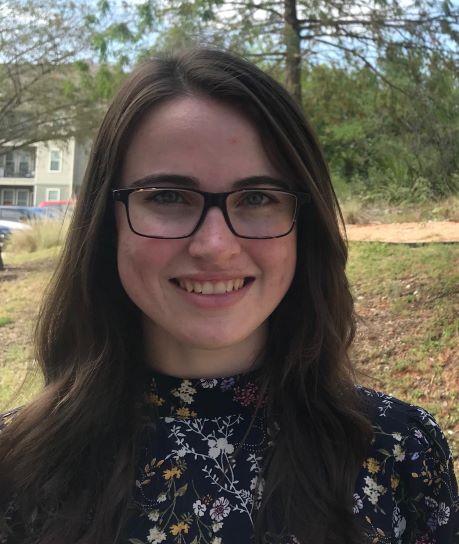
Emma Pabst graduated from the University of Texas at Austin where she earned a BA in African Diaspora Studies and a minor in Rhetoric with a focus on environmental racism. Ms. Pabst leads Environment Texas' global warming campaigns, including their work fighting the oil and gas industry in west Texas. Currently, she's working to take on flaring and venting in the state, as well as pressuring University of Texas and Texas A&M to reduce methane emissions on university-owned land.
How to join the Zoom meeting
First, RSVP to get the meeting link
- RSVP using this Google Doc.
- If you’ve never used Zoom before, we recommend giving yourself 5-10 minutes before the event starts to make sure you have time to set everything up.
- If you plan to join on a phone or tablet, we recommend downloading the free Zoom app from the app store in advance. Further instructions are below.
Joining the meeting
- Click the meeting link. (This will be sent to your email after you RSVP for the event)
- An option to join the meeting through your internet browser should appear. If not, you will be given the option to download the free Zoom client.
- Run the Zoom application.
- If prompted to sign-in to a Zoom account, do so by clicking the “Sign Up Free” link.
- Click “Join Meeting” to access the webinar.
- Email Emma Pabst with questions.
GEAA Makes SAWS Board Chair Nomination
Berto Guerra's term as SAWS Board Chair has long been expired. We were told that Mayor Nirenberg was waiting until the Vista Ridge project was completed to move forward with replacing Mr. Guerra.
Well, that project has officially been completed and we have word that our mayor is considering the Greater Edwards Aquifer Alliance's nominee, Robert Potts. He is the former director of the Texas Nature Conservancy and was general manager of the Edward Aquifer Authority.
Robert is uniquely qualified for this position. He is a staunch supporter of aquifer protection and water conservation. His family is from south Texas and (except for five years when he resided in west Texas) he has lived in the San Antonio area since 1993.
Robert has worked in natural resource management and water issues for more than 25 years, including several years as General Manager of the Edwards Aquifer Authority. During this time, he developed a strong understanding of the short and long-term water issues facing San Antonio and the state. He is currently President and CEO of the Dixon Water Foundation. We hope you will join GEAA in supporting his nomination.
At-large board member Pat Jasso’s, and South East Quadrant Representative Pat Merritt’s terms, are also expired.
We do not know when the City Council will vote on these appointments but, we will keep you posted. Meanwhile, you can contact Victoria Gonzalez-Gerlach to send in a nomination for the SAWS Board positions and/or to endorse GEAA’s nomination of Robert Potts for Chair of the SAWS Board. You can also contact your City Council representative.
by Annalisa Peace, Executive Director, Greater Edwards Aquifer AllianceBeavers and the Grand Portage: Key Bits in North American History
Reading about the journeys of travelers west of the Mississippi in the 1700-1800s, we understand they occasionally encountered French traders and trappers. What were they doing? Largely trapping beaver and trading for the pelts.
Beginning in the 17th century, North American beavers, Castor canadensis, were in great demand. Russia was a major source for furs beginning in the Middle Ages, and the beaver there had been largely wiped out. By the late 1800s it was largely extinct in North America, having originally numbered an estimated 60-400 million before European settlement.
In the 1900s there were protection measures and re-introduction programs, with the population reaching 6-12 million by 1988 (Wikipedia beaver article). But populations in some areas are being affected by loss of habitat.
High Falls on the Pigeon River, in Grand Portage State Park, Minnesota. This is the border with Canada, a couple miles west of Lake Superior. The many falls such as this on the river are the reason for the Grand Portage route used by the fur trade, through Grand Portage National Monument to the west. July 2017.
Yellowstone beavers making a comeback
Beavers are a keystone species, like the wolves in Yellowstone National Park. When wolves were re-introduced in Yellowstone a trophic cascade resulted, which included vegetation, beavers, fish, amphibians, reptiles, insects and birds.
Before the wolves were back there was only one beaver colony; now there are nine, with the resulting wetlands and all the wildlife that flourishes as a result thereof. In the December 2018 issue of this newsletter there was a picture in Lamar Valley, where the wolves were first re-introduced in Yellowstone.
I have seen or heard of landowners blowing up beaver dams with dynamite and shooting them. They may feel the beavers are damaging their property, but myself I'd rather like a wetland if I had a lower 40. But I'm not trying to run a farm. Still, there is much room for sensitivity regarding this critical species.
The Grand Portage
Traders and Indians would bring pelts to Lake Superior for transport to Europe, and trade goods would move inland. The final bit, the Grand Portage route from the Pigeon River to the lake, was required due to the falls on the Pigeon River, which is the boundary between the United States and Canada. The route was called Kitchi Onigaming (Great Carrying Place) by the local Ojibwe.
The route runs southeast from the Pigeon River. The French built Fort Charlotte at the river end, which was a rendezvous point for traders and Indians. The fort site is about 10 straight-line miles west of these pictures.
Camping and hiking near the portage
The historic portage is included in Grand Portage National Monument (map of monument). Here's a page on hiking the 8+ mile (each way) route. And there is a nice loop trail across Mt. Rose next to the lake.
There is no camping in the national monument other than 2 backcountry sites at Fort Charlotte. The monument has excellent historical exhibits about the transport routes, how the beaver pelts were processed into hats, the trade goods, and life at the fort built on the lake by the British after the defeat of the French in the French and Indian War.
In Grand Portage State Park, on the Pigeon River, there is the 1-mile round trip trail to High Falls (picture above) which continues another 4 miles (round trip) to Middle Falls (picture below). Here is the trails map (PDF). There is camping at Grand Portage Marina and RV Park though not in the state park.
Middle Falls on the Pigeon River in Grand Portage State Park. Canada is on the right.
The Voyageurs
The Voyageurs were the French Canadians doing the grunt work of moving packs of pelts to Lake Superior and trade goods in the other direction. Not far upstream of the Pigeon River is Boundary Waters Canoe Area Wilderness, in Superior National Forest. Further west is Voyageurs National Park.
At the north edge of these is the chain of lakes along the border with Canada, which the voyageurs traveled as part of their route, with various portages along the way. A number of Ontario provincial parks are just north. If I had another lifetime I might live here and do kayak trips summers and ski trips winters.
Sunrise at Grand Portage National Monument, Minnesota. Isle Royale National Park, Michigan, is barely visible on the horizon. A ferry to Isle Royale leaves from the cove on the left. Canada is a few miles further up the coast to the left.
by Kevin Hartley, Alamo Group Outings leader“Decoupling” CPS Rates Can Help Reach Climate Goals
CPS Energy, our publicly owned energy utility, has a built-in conflict of public interest in its operations. On the one hand, the public interest is to quickly eliminate fossil fuel emissions to fulfill the goals of the Paris Accords and the San Antonio Climate Action and Adaptation Plan. On the other hand, CPS Energy is motivated to maximize its revenues by selling energy, including coal and natural gas.
The more fossil fuels CPS Energy sells, the more money it (and its owner, the City) makes. But if CPS Energy successfully helps its customers use solar panels and to become more energy efficient, it risks not being able to cover its costs of serving its customers and its obligation of providing a third of the City’s budget (about $300 million a year).
Part of the answer, which has been adopted to one degree or another in more than half the states, is to adopt decoupling mechanisms which use modest, regular automatic rate reconciliations every year to compensate for under-or over-collection of fixed costs during the previous year. This would provide CPS Energy with the certainty that it will meet its revenue requirements, including its obligation to fund a huge portion of the City’s budget.
Los Angeles Department of Power and Water (also publicly owned) adopted decoupling for its electricity service in 2014. This allowed it to double its energy efficiency incentive budget to $265 million over the following two years. Decoupling is a big reason that Californians use half the energy per capita as citizens of other states.
Under the current rate structure, CPS Energy cannot afford to promote efficiency and renewables to the extent needed. (It plans to spend only $77 million over 10 years to provide incentives for efficiency and renewables under its new Step Flex Plan). By adopting decoupling, along with other incentives to promote energy efficiency expenditures, the utility can earn a higher return in promoting energy efficiency than in selling energy.
“Energy efficiency is the cleanest, cheapest way for utilities to provide reliable service.” San Antonio City Council should use its rate approval power to guide CPS Energy toward decoupling.
Sources: Natural Resources Defense Council; Northwest Energy Efficiency Council; Energy News Network; “The California Experiment,” The Atlantic, Oct. 2009
by Darby Riley, Alamo Group Political ChairCity Council Rezones Sensitive Site on Aquifer Recharge Zone
On June 4th the San Antonio City Council voted to rezone a 21.6 acre site to allow the developer of Mustang Oaks to build 67 new homes and up to 12 apartment buildings (for a total of 80 structures) at the intersection of Jones-Maltsberger and Redland Roads (see location map). For more on this rezoning, read Brendan Gibbons’ story, San Antonio Council OKs Zoning Change Over Edwards Aquifer Property.
The site is a former horse farm in Council District 10 that is transected by Mud Creek and entirely within the Edwards Aquifer Recharge Zone. The overall property is vegetated with native trees and understory, which provide excellent filtration for water recharging the Aquifer.
We were disappointed that the members of the Zoning Commission voted unanimously to approve this request on May 5th, despite serious concerns expressed by 21 citizens and neighborhood organizations, the San Antonio River Authority, and Greater Edwards Aquifer Alliance.
Rezoning will increase impervious cover
What does the City of San Antonio gain by granting a request to reduce minimum lot size over the Edwards Aquifer Recharge zone from 10,000 sq/ft (under current NP-10 ERZD) to 6,000 sq/ft, as requested by the developer? If you set aside requirements for flood plain preservation, creek buffers, and stormwater detention, which would be the same under either scenario, approving this request for rezoning will allow a greater amount of impervious cover on this site.
Adding requirements would have protect drinking water
As Mud Creek is an important recharge feature for the Edwards Aquifer, GEAA recommended requiring a riparian buffer of natural vegetation that includes preserving the existing large and Heritage-sized trees, and that the protected floodplain incorporate hike and bike trails along Mud Creek that will connect to the City’s Mud Creek Park.
We also recommended mitigating stormwater pollution resulting from the development of this site with bioretention rather than the traditional sand filters. The area is an amenity which should be preserved instead of clearing the site and building a concrete embankment to channel flows that would result in degradation of the creek.
In addition, Council should have imposed measures to ensure that stormwater runoff from the site will not only meet required stormwater standards, but will be evaluated to prevent the increased runoff (volume and velocity) from adversely impacting the ecological integrity of not only Mud Creek but also of downstream Salado Creek. Salado Creek already suffers from impaired water quality and increased velocities that have caused severe bank erosion.
Why did the city give up aquifer protection?
When a developer comes to the City with a request for rezoning, they are asking the City to do them a favor. The City has the upper hand and should have negotiated and imposed conditions that address all legitimate concerns.
While we appreciate the conditions recommended by SAWS (See SAWS Report) and improvements to the project suggested by the San Antonio River Authority, we believe that more protections to aquifer recharge would be afforded by developing the site under the restrictions required by the current zoning designation and see no benefit to the citizens of San Antonio from granting this request.
It has always been the position of GEAA that requests for rezoning on the Edwards Aquifer Recharge Zone that allow an increase in impervious cover be denied.
When compared to San Marcos and Austin, San Antonio’s aquifer protection regulations are weak and allow for adequate flexibility. There was no need for Council to enable further degradation of the aquifer.
by Annalisa Peace, Executive Director, Greater Edwards Aquifer Alliance
Outings: The Call of the Wild
Visit the Alamo Sierra Club Outings page on Meetup for detailed information about all of our upcoming Sierra Club Outings.
The Alamo Sierran Newsletter
Richard Alles, Editor
Published by The Alamo Group of the Sierra Club, P.O. Box 6443, San Antonio, TX 78209, AlamoSierraClub.org.
The Alamo Group is one of 13 regional groups within the Lone Star Chapter of the Sierra Club.
Changed your mailing address?
Have you moved? Let us know by sending your old address, your new address and your member ID (see: Locating Your Member ID) to: address.changes@sierraclub.org.
Go online for the latest news and events
 |
